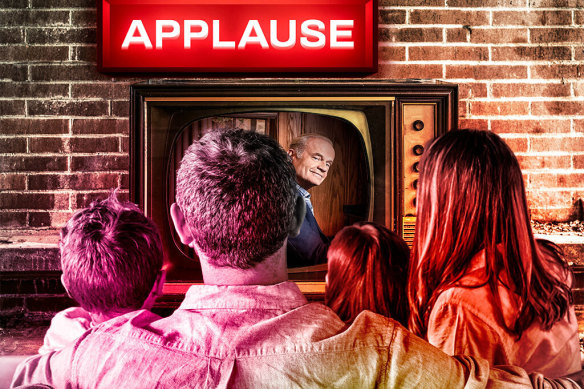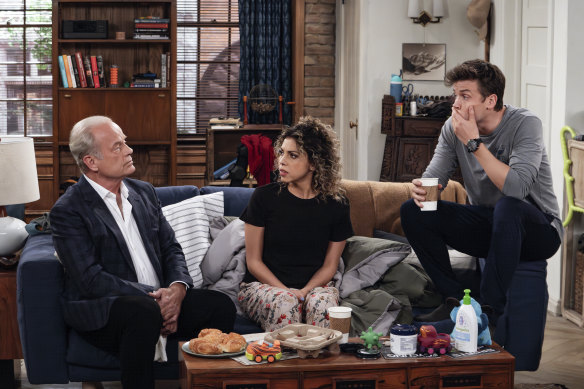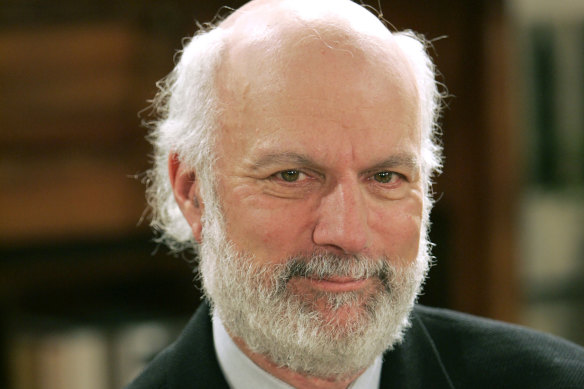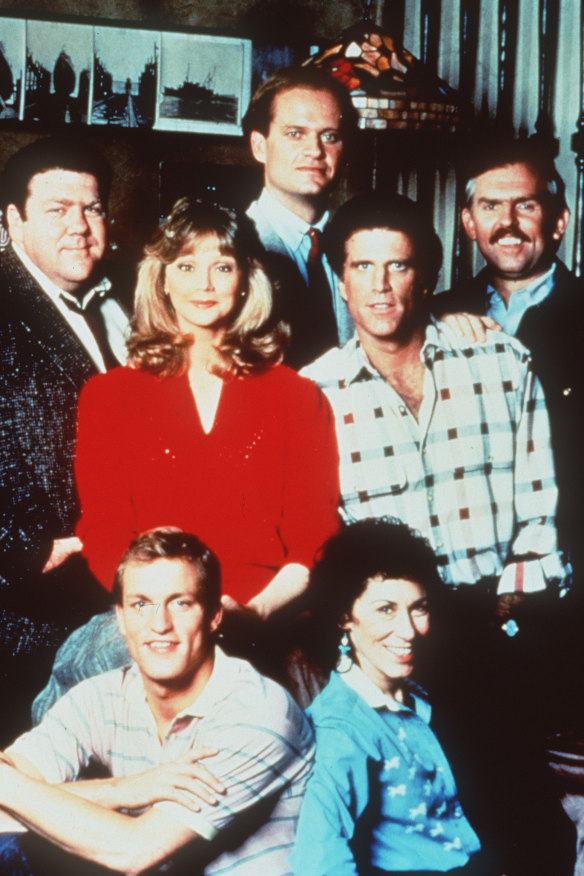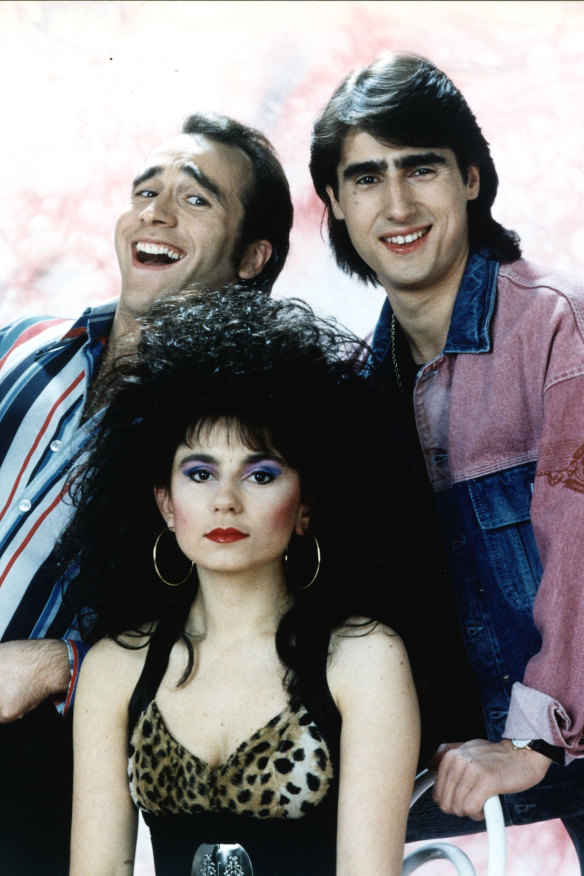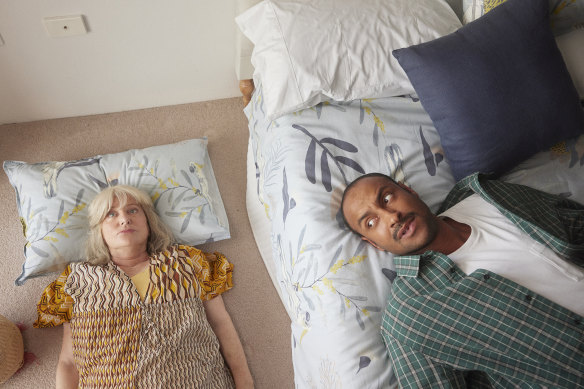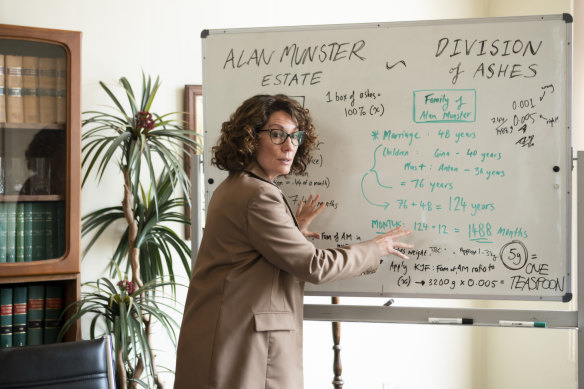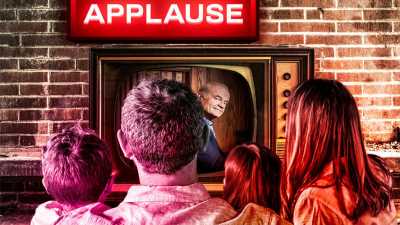
By Robert Moran
Live studio audiences, multicam set-ups, 22-minute episodes: the classic sitcom was a specific sort of art. Credit: Michael Howard
Save articles for later
Add articles to your saved list and come back to them any time.
Veteran television director James Burrows knows what it takes to make people laugh; the 82-year-old’s been doing it for 50 years, ever since he directed his first episode of The Mary Tyler Moore Show in 1974. He’s the master of a certain kind of art, the classic TV sitcom, the sort of show that ruled broadcasting schedules for decades before The Larry Sanders Show (1992-98) or Ricky Gervais’ The Office (2001-03) – no one can decide – convinced the world that laughter could thrive in more subtle scenarios.
You could call Burrows the Sitcom Don; among his more than 1000 directing credits are 75 episodes of the classic Taxi (1978-1982) and 237 episodes of Cheers (1982-1993), which he co-created with Glen and Les Charles. He also helmed 246 episodes of Will & Grace (1998-2020), 21 episodes of Caroline in the City (1995-98), 15 episodes of Friends (1994-98), and too many more to mention. He also has 11 Emmys to his name.
“Oh my God, there’s a lot of them,” he offers gruffly, when I ask him to name the sitcom work he’s proudest of. “I think the Taxi I did where Reverend Jim (Christopher Lloyd) becomes a cab driver – ‘what does a yellow light mean?’ – is one. The end of the first season of Cheers when Sam (Ted Danson) and Diane (Shelley Long) get together and kiss at the end of the episode. And with Friends, ‘The One with the Prom Video’, which is famous. And there’s a number of Will & Grace episodes, like the one where they do I Love Lucy. I’ve had more than my share of those kinds of shows.”
Burrows’ latest work is the opening two episodes of Paramount+’s new Frasier reboot, a return to a series he first directed in 1993. The series is idyllic comfort TV – as soon as you hear those “tossed salads and scrambled eggs”, you’re transported to a simpler time when problems were solved in 22 minutes and the speckled laughter of a live audience warmly enveloped you like white noise.
Kelsey Grammer as Frasier Crane, Jess Salgueiro as Eve and Jack Cutmore-Scott as Freddy in the new Frasier.Credit: Paramount+
“It’s the same way I’ve always done it, ever since I did the first Mary Tyler Moore Show,” he says of filming the new Frasier in the old way, in front of a live studio audience with a multicam setup (that allows for quick coverage and fewer takes). For Burrows, it’s a tried and tested formula.
“Taping with a live audience, it creates an enormous amount of energy,” he says. “For the actors, you can see a twinkle in their eyes when they land a laugh. And it’s a teacher for the writers too, because if the actors read a joke and it doesn’t get a laugh, they’ve gotta go back and rewrite the joke. It happens a lot, sure.”
But what about the trusty ol’ laugh track, surely it can plug straight into the silent gaps? “No, I’ve never believed in it,” Burrows shoots back. “Sometimes if you make an edit in a sitcom, if you cut out some lines, you have to smooth the edit soundwise, so that’s where you might use a laugh track. But if you do it in front of an audience and they don’t laugh? Your audience just told you the joke wasn’t funny. So change the joke, you know? Don’t rely on a machine.”
TV comedy master James Burrows. The 82-year-old has over 1000 sitcom credits to his name, stretching back to his first job on The Mary Tyler Moore Show in 1974.
Watching Frasier Crane’s familiar pomp (eg, while sitting in a uni pub: “What is it about the city of Boston that leads me to forego the more sophisticated temptation of the fermented grape? Sitting here with a cold brew in my hand, I feel amalgamated with the hoi polloi!” – I mean, it’s classic Frasier), you’ll suddenly be struck by how much the classic sitcom has fallen out of favour. In Australia, the format’s long disappeared, killed off by panel shows and reality TV. But even in the States, hallowed ground for the genre, Burrows has seen its twilight.
“I think there’s two or three on the air here – The Conners, The Neighborhood, and Bob Hearts Abishola, which is a four-camera show that films without an audience,” he says. “And I don’t know why they’ve disappeared. They’re the funniest television and the most inexpensive, and yet the studios don’t want to make them. And I don’t know why they don’t do them anymore.”
The original cast of Cheers, including Kelsey Grammer, Woody Harrelson and Shelley Long. Burrows created the series with Glen and Les Charles, and directed 237 of its 275 episodes.
It’s always been the case that comedy doesn’t command the same respect as drama, but the sitcom seems a particularly maligned format, seen as chintzy and unserious. However, it feels like having to land so many punchlines and build character in under 30 minutes is a much more difficult task.
“I don’t do drama, I never did,” says Burrows. “I did a Lou Grant once – I don’t know if you remember that show? That was Ed Asner from The Mary Tyler Moore Show, we spun him off into a one-camera show that was kind of a dramedy. But I don’t see the world that way. I see the world this way,” he says, comically skewing his glasses cock-eyed.
“My dad was a writer on Broadway and somebody asked him once, ‘Why don’t you ever do drama?’ And he said, ‘I do drama, it just happens to be funny.’ That’s how I feel about it.”
Entertainment Weekly was already bemoaning the “death of the sitcom” in 1999, an era that was still producing enduring classics like Friends and Everybody Loves Raymond, and almost a decade before an all-timer like How I Met Your Mother, broadcast with a laugh track, even existed. In Australia, the classic sitcom format had already been dead for years.
Older Millennials might remember watching Acropolis Now, All Together Now, and even TV shows without a “now” in the title, like the legacy-tainted Hey Dad..!. But there’s a whole generation of viewers who’ve grown up without a classic Australian sitcom. It’s not like they’re unfamiliar with the format – Friends has famously been a streaming success with Gen Z, and free-to-air networks still fill their schedules with reliable repeats of Seinfeld, The Big Bang Theory and Two Broke Girls.
Nick Giannopoulos, Mary Coustas and George Kapiniaris of local sitcom Acropolis Now, which ran on the Seven Network for 63 episodes between 1989-1992.
But, in Australia, TV comedies have long shied away from the format of yore, and recent favourites like Rosehaven, Utopia, Fisk and Colin From Accounts have continued the complete shift away from multicam, live audience setups. Why are we so averse to the classic sitcom?
Matt Okine, the creator, writer and star of ABC’s recent Mother and Son reboot, says it was one of the first factors he had to consider when tackling the series.
“When we first pitched the idea of Mother and Son with the original creator, Geoffrey Atherden, one of the first questions he asked was whether we would film in front of a studio audience. He told us about the culture of the show back in the day – rehearsing all week and then filming on Saturday nights to a packed studio. It sounded like an event people could really hinge their weekend around, like going to the theatre,” Okine says.
“We ultimately decided against it because we wanted our re-imagining of this show to be seen through a 2023 lens. That’s not just the storytelling element, but also the style in which it’s filmed as well. Filming in front of a live audience would’ve felt too much like the original and we’re trying to do everything we can to show the differences between then and now – that includes the shooting style of the show and how we consume it.”
Denise Scott and Matt Okine in the ABC’s new Mother and Son.
But at this point, the classic sitcom seems so sidelined as old-fashioned its return would feel like a breath of fresh air. Okine, who had previously worked in the TV comedy space with his Stan series The Other Guy, still sees the appeal of the format.
“I’m still keen to tackle the live sitcom format one day,” he says. “It sounds obvious, but comedy makes people happy and brings people together. I have fond memories of my dad and I watching the original Mother and Son together… I wanted to make a show that brought families together the same way the original did.”
Julie Eckersley, head of scripted at SBS, whose recent commissions include the original “dramedy” While the Men Are Away, agrees it’s possible for the local industry to do the classic sitcom again but suggests it’d take a cultural shift from both makers and viewers.
“We haven’t traditionally, or for a long time, done shows with that canned laughter in. But I know people who put on Seinfeld and Friends as a nightly thing to go to sleep, exactly because of that comfort,” she laughs.
The first thing we’d have to change, she says, is our writers’ rooms. “When you look at how the US do it – the punch-ups, the rigour, that group of writers always on – that’s just not how we create television, and – this is something that’s been discussed in the recent strikes – it’s become increasingly expensive. But if you were to put your mind to making a world-class Australian sitcom, I think you’d want to get that rigour of the ongoing writers’ room set up, and in a way you can afford it.”
Eckersley has comedy experience on both sides of the camera. Before her SBS appointment, she was a producer on shows including The Family Law and Maximum Choppage, and before that she was a regular comedy performer.
“Comedies like The Family Law, they’re created in the more traditional way that Australia creates television, which is you write draft one, you go away, you come back, you go away, you come back – and what’s good about that is there’s time. It makes it manageable rather than having a whole lot of writers on the floor working day in and day out.”
Kitty Flanagan as Helen Tudor Fisk in the ABC comedy Fisk. The series is shot in what’s become the traditional Aussie sitcom way: on location and without canned laughter.
She remembers her last experiences shooting live multicam while a performer in the mid-’00s, with Shaun Micallef on Newstopia and Rebel Wilson on The Wedge. “It was super fun, but you get one or two takes and you’ve just got to keep on moving. It’s start, stop, canned laughter, repeat. It’s a very particular thing. So while Frasier is comforting, I do think audiences require emotional satisfaction, and can you get that from performance and writing when you’re shooting that quickly?”
If she’s intrigued to see how it’d fare, Eckersley is also sceptical that a return to the formula of yore is the answer for Australian comedy. “There’s always room for multiple things in the market but when you look at where comedies have got to, in terms of Schitt’s Creek and The Good Place and Bojack Horseman, the medium has certainly become very sophisticated and satisfying, starting from that lighter touch but going to those big character places,” she says. “And when you look at Colin From Accounts or Fisk, No Activity and even Bluey, they feel like our versions of what an international comedy can be.”
After 50 years of doing sitcoms, Burrows has his own theories on what makes a successful comedy. And studio audience or not, the core necessity is obvious.
“For me, when I do a show, I have to try to mould the cast into a homogeneous group that likes one another, works together, and hopefully that transmits across the screen. The characters, they have to be identifiable – you have to want to watch them every week to see what they’re going through,” he says.
“But then, you’ve gotta make sure it’s funny. If you’re doing a sitcom and it’s not funny, you can take the ‘com’ out of it and just call it a ‘sit’,” he jokes. “And then add an ‘h’, because that’s what the show will be.”
Frasier streams on Paramount+ from Friday, October 13.
Find out the next TV, streaming series and movies to add to your must-sees. Get The Watchlist delivered every Thursday.
To read more from Spectrum, visit our page here.
Most Viewed in Culture
Source: Read Full Article
